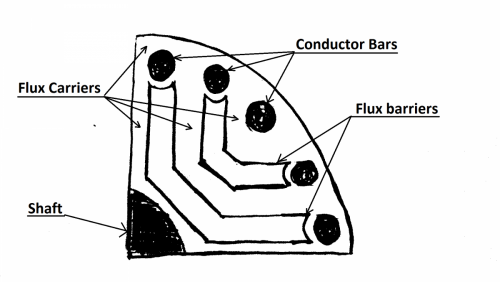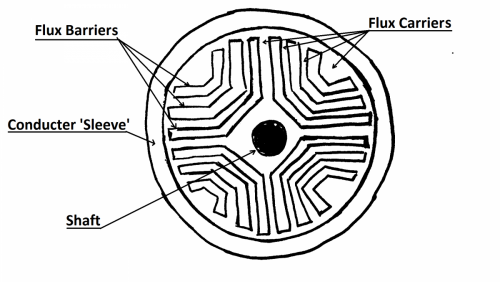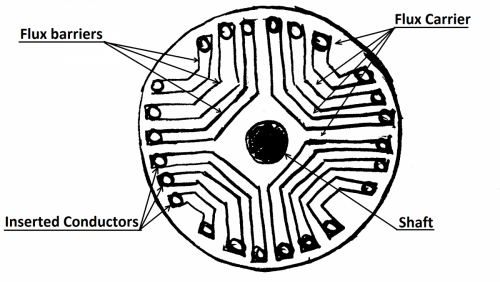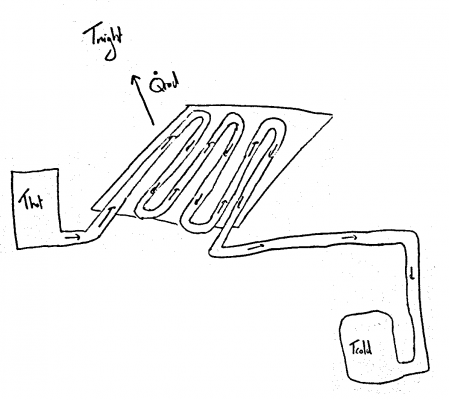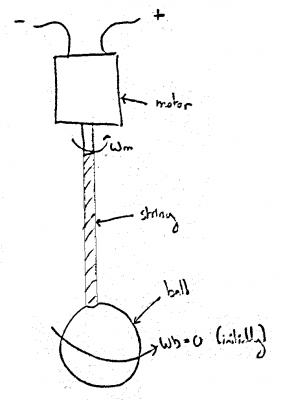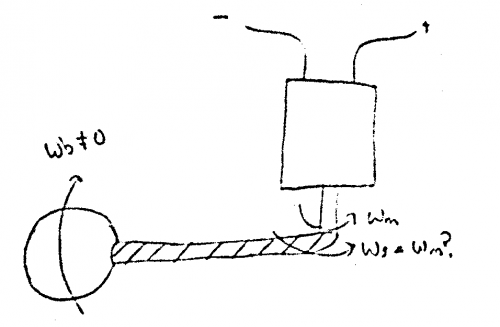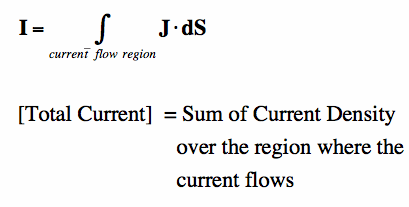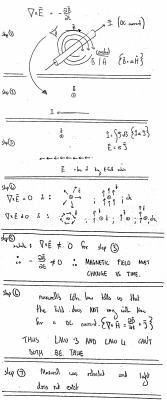

CasualKilla
Senior Members-
Posts
178 -
Joined
-
Last visited
Content Type
Profiles
Forums
Events
Everything posted by CasualKilla
-

Understanding the RSM (reluctance synchronous machine)
CasualKilla replied to CasualKilla's topic in Engineering
Your comment on the conductors confused me. Conductors like copper and aluminium have approximately the same permeability of air, so it should not impede the RSM torque at synchronous speed. Also there is no current induced at synchronous speed, so they shouldn't cause any weird effects. Am i missing something? That design is very similar to existing designs, except those use curved barriers. By suppress I assume you mean make the barriers thinner and less numerous? Anyway, I will be running simulations to see the effect of increasing and decreasing the flux barrier thickness, but thank you for your insight, you may save me alot of time. it takes about 2 hours to run a simulation. Here are two initial concepts I will be evaluating, I will use an existing design for the RSM component and experiment with adding the induction effects. I will also do a third design where I will fiddle with the RSM barriers myself, will probably looks something like this: Existing RSM design as basis: Custom RSM design: I kept the RSM flux barriers simple to allow for easy variation of simulation parameters. -
We don't calculate the effects, that would be a very, very difficult problem, something that probably cannot be solved without some serious computation power. But, we can use an energy balance to determine the "effective" sky temperature with which radiation occurs.
-
It not not riadting with the ambiat air, correct, but the effective sky temperature is no where near 3k, if that was the case we would have the earth freezing solid at night. If you model the surface with witch the radiation occurs as a single infinite surface with an emmisivity of 1 It is more like -5 to 15 degrees C.
-
I am not sure what the effective night SKY temperature is in the Philippines, but generally it varies from -5 to 15 degrees Celsius for most places (at night). Note radiation heat transfer occurs with the effective SKY temperature, and NOT the ambient air temperature. When the temperature of the cooler drops below the ambient air, there will be convection heat transfer into the water, however the will still be radiation heat transfer out of the water and there are several ways to reduce the convection. @Ronald, I suggest you read this paper by one of my lectures where he creates a model of a passive radiation cooler if you are interested in this idea. http://www.erc.uct.ac.za/jesa/volume16/16-2jesa-dobson.pdf The main limiting factor of these coolers is the dew point, which is normally around 10 Celsius, but depends on humidity. The temperature of the surface will not drop below the dew point temperature because of the latent heat of evaporation of the water on the surface. Since you are planning to cool the water to about 24 Celsius, I don't think you will have any problems at all. Conduction? Do you mean convection?
-

The theory of self-consistent centripetal force
CasualKilla replied to yahya515's topic in Speculations
Please post a video of your experiment in action -
WOW, some really sick devices guys, I especially like the 3D one. Anybody got ideas of some kind of cheap fluid that has at least twice the permeability of air?
-
Hi Ronald I have an idea solution that may work. You can use a "radiation cooler" like the one shown below. The water radiates heat to the colder effective night-sky / space temperature. The example below will only work at night, in the day it will actually heat up the water (since it will become a solar collector), but if you use some kind of selective transmitter ( ie reflects / absorbs solar radiation, but is transparent to the lower temperature black body radiation emitted by the water pipes) you can even get cooling during daytime. You can also place the pipes inside a vacuum container to remove the convection heat transfer, and theoretically you can can get the water to freeze with a large enough cooler!!! WOW MUCH AMAZ, SUCH SCIENCE. Sorry I don't have any calculations for you, but hopefully someone can take this idea and roll with it. EDIT: Theoretically the water can even circulate by natural convection if the source of warm water is higher than the cool water outlet, but depending on the friction in the pipes, a pump may be needed.
-
Well the B is a vector representing the field at a certain point in space, but since we are trying to determine what this value of B will be at that point, I am saying it might have been more accurate to to assign an arbitrary name to the point, say "P" and then calculate the value of B at that point using Maxwell equations. It still makes sense to assume there is a B field vector at that point and solve for it, so I guess i shouldn't have said anything, sorry for the confusion. My reasoning was that the value of B at point P should be changing with time according to Faraday's Law. New Post: So the curl of the E-field is zero in step 3, so my error lies in the understanding of the curl in step 4. I have tried to understand this by making a vector function describing the field, then applying the curl operator, but can't seem to derive said vector function. So the way curl at a point was described to me intuitively is like summing up the torque of all the points on the vector function around the point in question. This is how I get a non-zero curl, since there is a clockwise 'torque' around B. However if I understand Studiot correctly, vectors need to create a continuous loop around the point to create a curl, and the infinite straight-line E field shown in step 3 does not do this, so the curl is zero. I am trying to dive into the maths of the curl operator at the moment, since clearly my intuitive understanding does not suffice or is plain incorrect. If someone could help with the derivation of a vector function of the E field in step 3, that would help loads.
-

The theory of self-consistent centripetal force
CasualKilla replied to yahya515's topic in Speculations
Question, is this the experiment you were describing: Because I have some other explanations for the observations you made, as well as a better way to conduct your experiment. -

The theory of self-consistent centripetal force
CasualKilla replied to yahya515's topic in Speculations
Newton was a avid believer in Alchemy so i think he was open to 'magic' -
Sorry, you asked me why I think there is a curl at at B, so I was assumed you were saying that there was not a net curl, ie. my steps 3 to 5 were incorrect. So I was going based on that assumption.. Also by curl I mean the mathematical curl created by the E-field at the test point with magnetic flux density B, not the the fact that the B field is actually 'curling' around the wire. Just making sure we on the same page. Note. Probably should not have named that point B, it is rather confusing, but there is a B vector at the point, but I am trying to see why B is not increasing.
-

Anti-Gravity invented and car running on water
CasualKilla replied to nec209's topic in Speculations
Oh man, I loled so hard, did you even watch the video? It takes alot of energy to move a rotating mass like that, its kinda like inertia, but works with chaging the axis of rotation, and the faster it spins the higher this "inertia". The mass actually falls, but very slowly. Pretty cool, but nothing new there. If you physically try to tilt that weight upwards or downwards you will see why the simple F = mg force is not moving it very fast. -

Are mathematical constants equivalent to Infinity?
CasualKilla replied to Mr. Astrophysicist's topic in Applied Mathematics
lim(x to inf) of x = inf lim(x to inf) of 2x = inf but ( lim(x to inf) of x ) / ( lim(x to inf) of 2x = inf ) = 0.5 inf/inf can be equal to any number, so as you can see it does not function like any "constant". Infinite is in a league of its own. -

How do you prevent eddy currents in a transformer?
CasualKilla replied to Mr. Astrophysicist's topic in Engineering
LOLOL. But studiot is right though, a vacuum cored TX in an isolated universe consisting entirely out of vacuum will have 0 eddy current losses. But the problem is, how does one create the transformer coils without conductors. The game is on. -
So the drift current coming from a point/volume is equal to the change of charge at the point /( in that volume). Ok makes sense, so we can't have current flow if there are no electrical charges. ie. vacumm. That makes sense. But I am considering the current flowing in that a conductor. Ok I see that I have gone full retard, apparently the E field is zero inside a conductor, but I still don't get that. Is that only true if we assume that the conductivity is infinite (ie Rcond = 0 ohms)?. (thinking about ohms law here)
-
Oh ok, well since there is current in the conductor, we have a drift current density J. And Ohm's law says that if there is a drift current density, we will have a magnetic field E. Why I drew the E field as little vectors like that I have no idea. But I am partially certain there will be an E-field in the same direction and position as the current flow in the wire. I am new to vector functions, curl, divergence etc. I taught it to myself over the last 2 days, so I apologize if my understanding is a bit basic.
-
This ^. Although a theory is not free from being disproved, since a theory does not always describe reality, but rather a model to understand reality. A theory can therefore be used to make predictions about reality. An accepted theory will make accurate predictions about reality and will not contradict itself, or it would be immediately thrown out, since this type of theory is not useful. So what you described in the OP is not a theory for starters. Theory's often evolve by becoming more complicated to account for newly observed phenomenon, but very rarely is a theory completely abolished by some new finding since it was used to make predictions about reality, it will always retain some element of truth about the reality it describes. You may ask yourself, what is the purpose of a teaching a theory that may not be 100% true to reality, well the answer is very simple; theories are amazing useful tools to that we can use to make decisions and design amazing contraptions.
-

How do you prevent eddy currents in a transformer?
CasualKilla replied to Mr. Astrophysicist's topic in Engineering
You can laminate the core, I beleive in the direction of flux flow works best. Or if your rich you can make the core out of a highly resistive materiel that still has decent permeability. Peddy = I^2 * R. Induced EMF will be constant so by reducing the current by increasing resistance of the current flow path you decrease losses. The only way to truly prevent eddy current is to turn of the transformer as I don't believe there will ever be a way to make the resistance of the current path infinity. -

Understanding the RSM (reluctance synchronous machine)
CasualKilla replied to CasualKilla's topic in Engineering
You can also add conductors into the flux barriers, or have the entire flux barriers made of conductive materials. I am working on this type of design to achieve a line-start RSM. But alas, I still have no idea how the RSM becomes a magnet or creates torque. If it was a PM machine it would be alot easier to understand. -
I am considering a DC current I flowing through a conductor. From Ampere's Law, we know this creates a Constant magnetic field circling the conductor. I am trying to reconcile Faraday's Law with the phenomenon described above. I know that Ampere's Law describes the phenomenon, but my reasoning is that it should also not violate Faraday's Law. Using Faraday's Law, to analyse the situation, I came to the conclusion that the magnetic field must change with an for a DC current through the conductor. Could someone please try follow my steps (below) and try show me where I am going wrong. Note there is a mistake in step 3: J = oE not E = oJ, but it does not make difference to my reasoning.
-

Magnetic field lines and iron filings
CasualKilla replied to CasualKilla's topic in Classical Physics
Ok yeah, the magnetic field in the air is definitely weaker than through the filings, but if we consider that just a single line of filings exists, I do not think we would see the field being weak just outside the 'ring' of filing then suddenly becoming stronger. MMF = integral(Hdl). I think you may be misunderstanding how shielding works. So my reasoning is the field will always be stronger nearer to the blob and thus filing will want to be closer rather than further from it. This ignores the concept that Studiot explained, so I am my argument exist hypothetically in a world where those like pole repultions don't occur

